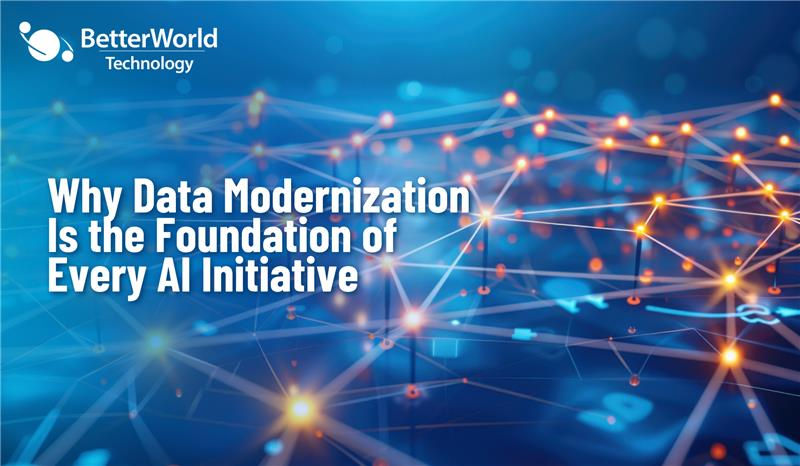What Enterprise Service Operations Can Teach Companies About Efficiency
- John Jordan

- Sep 26
- 5 min read
Rethinking the Role of IT in Modern Enterprises
For many organizations, IT has long been viewed as a back-office function. The servers stayed on, the tickets were managed, and employees were given basic support when something broke. Today that model falls short. Enterprise service operations can teach companies that IT is not just a utility but a driver of efficiency and productivity. When done right, service operations help eliminate silos, empower employees, and transform technology into a strategic enabler for the business.
BetterWorld Technology has seen this shift firsthand. Our work shows that enterprise service operations are no longer just about keeping systems running. Instead, the real opportunity lies in creating seamless digital experiences for employees across hybrid, remote, and in-office environments. By enabling teams, simplifying workflows, and focusing on employee productivity, IT becomes central to business growth rather than a cost center.
The Problems Holding Back Enterprise Efficiency
Before service operations can deliver value, organizations must confront the challenges that often erode efficiency. These include:
Siloed systems that do not communicate with each other
Slow resolution times and repetitive manual processes
Inconsistent support experiences across different channels
Lack of visibility into performance, satisfaction, and service delivery
Difficulty scaling IT services to match organizational growth
These problems create frustration for employees and reduce overall productivity. Enterprise service operations, guided by best practices, help tackle these obstacles head on.
The Three-Part Framework That Drives Smarter Operations
BetterWorld Technology uses a proven model that has transformed enterprise service delivery for clients across industries. The approach is built on three interconnected pillars:
Enterprise Service Management EnablementITIL-based processes, automated service requests, and best-practice workflows streamline operations. Instead of relying on outdated ticketing systems, organizations benefit from modernized IT service delivery that reduces inefficiencies.
Multichannel Workplace SupportEmployees expect help to be available anywhere and at any time. Our framework ensures that no matter how they reach out—whether through chat, portals, phone, or email—they receive consistent, reliable support. This is particularly vital in environments where teams are spread across offices, remote setups, and hybrid models.
Analytics-Driven OptimizationReal-time reporting, SLA tracking, and performance metrics offer transparency into service quality. These insights make it possible to continuously improve operations, measure employee satisfaction, and optimize IT services over time.
This structured approach turns IT from a reactive function into a proactive partner that enables smarter decision-making and stronger business outcomes.
How Enterprise Service Operations Improve Efficiency
Enterprises that invest in operational transformation see measurable results. The table below highlights the contrast between traditional IT management and a modern service operations model:
Aspect | Traditional IT Focus | Enterprise Service Operations Approach |
Ticket Handling | Manual routing, slow resolutions | Automated routing and smart ticketing |
Employee Experience | Reactive break-fix support | Empowering self-service and knowledge bases |
Service Consistency | Varies across channels | Unified support across chat, portal, phone, email |
Visibility and Reporting | Limited, fragmented data | Real-time SLA tracking and performance metrics |
Scalability | Hard to adapt to growth | Designed to scale with teams and evolving tech |
When applied consistently, these improvements translate into faster resolution times, stronger operational resilience, and better employee engagement.
Why the Employee Experience Matters
Efficiency is not just about speed or cost savings. It is also about how employees feel when they interact with IT services. Self-service tools, intelligent knowledge bases, and automated workflows empower people to solve problems quickly. This reduces frustration and allows teams to focus on meaningful work instead of waiting for technical support.
BetterWorld Technology has seen companies thrive when consistency across support channels is achieved. By designing service operations that feel seamless, organizations strengthen employee confidence in IT, which in turn drives higher adoption of tools and systems.
Scalability and Long-Term Adaptability
One of the greatest strengths of modern enterprise service operations is the ability to grow alongside the business. Traditional IT often struggles to keep pace with expanding teams and new applications. A scalable model allows enterprises to remain resilient even as technology stacks evolve.
By building operations around frameworks that adapt to change, BetterWorld Technology ensures that clients can sustain productivity gains well into the future. The focus is always on enabling agility without sacrificing reliability.
Turning IT Into a Strategic Enabler
When service operations are implemented strategically, IT no longer plays a background role. Instead, it becomes a catalyst for business growth. Companies that embrace this approach experience:
Faster issue resolution through automation
Consistent support across every communication channel
Transparency in service quality with real-time performance insights
Empowered employees who solve problems with self-service tools
Scalable systems designed to adapt as the business grows
This is the model that has allowed BetterWorld Technology to help organizations reduce complexity, eliminate silos, and create measurable improvements in productivity.
Ready to Redefine Efficiency?
The lesson is clear. Enterprise service operations can transform IT from a reactive function into a true driver of efficiency, resilience, and business success. Companies that fail to evolve risk falling behind with frustrated employees, inefficient systems, and limited visibility.
If you are ready to see how a proven enterprise service operations framework can elevate your organization, let’s talk. Connect with BetterWorld Technology today and take the first step toward smarter, more efficient IT operations.
FAQs
What are enterprise service operations?
Enterprise service operations refer to the processes, frameworks, and technologies that manage how IT services are delivered and supported across an organization. They go beyond traditional IT by focusing on efficiency, automation, and employee experience, ensuring that services are consistent, scalable, and aligned with business goals.
How do enterprise service operations improve efficiency?
By using automation, multichannel support, and real-time analytics, enterprise service operations reduce repetitive tasks, speed up issue resolution, and create smoother workflows. This helps employees solve problems faster, improves service consistency, and frees IT teams to focus on higher-value initiatives.
What is the difference between enterprise service operations and traditional IT management?
Traditional IT management often focuses on break-fix support and manual ticket handling, while enterprise service operations take a proactive approach. With ITIL-based frameworks, automated workflows, and unified support across channels, service operations turn IT into a strategic business enabler rather than a reactive function.
How can enterprise service operations enhance the employee experience?
Employees benefit from self-service tools, knowledge bases, and intelligent support systems that allow them to solve issues quickly. At the same time, consistent support across chat, portals, phone, and email ensures they receive the same high-quality service no matter how they reach out. This reduces frustration and boosts productivity.
Are enterprise service operations scalable for growing organizations?
Yes. A well-structured enterprise service operations framework is designed to scale with evolving technology stacks and expanding teams. This adaptability ensures long-term operational resilience and allows organizations to sustain productivity gains as they grow.










